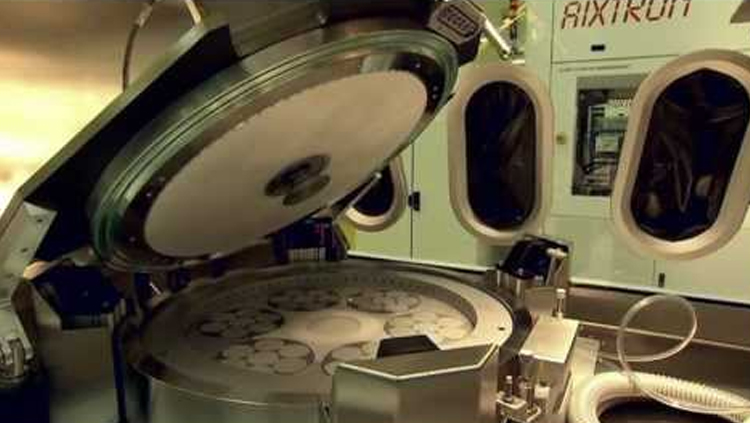Fraunhofer ISE grabs solar cell world record
Germany s Fraunhofer Institute for Solar Energy Systems has wrested the title of “most efficient photovoltaic cell” from the US National Renewable Energy Laboratory.
It has recorded 41.1 percent conversion efficiency in sunlight concentrated by a factor of 454, thanks to high-quality compound semiconductor layers absorbing solar energy in the metamorphic triple-junction cells.
“In transmission electron microscopy you wouldn't see any defects in the upper areas, which has not previously been the case,” Fraunhofer ISE s Frank Dimroth told compoundsemiconductor.net.
The results will be presented at the 34th IEEE Photovoltaic Specialists Conference in Philadelphia, Pennsylvania, which runs from June 7"“12. The III-V epitaxy and solar cell team that Dimroth heads will show improvements on the same basic cell design responsible for two previous records in the last 6 months.
The key innovation came by optimizing a buffer layer that relieves strain between the Ga0.35In0.65P top junction, Ga0.83In0.17P middle junction and germanium bottom junction.
“Below the barrier layers of the middle cell we have a graded buffer structure,” Dimroth explained. “You re changing the lattice constant, you re completely relaxing the lattice and in the end you want a template that is actually a new crystal.”
“A lot of dislocations are formed in this grading. You have to make sure that they run from one end of the wafer to the other, and are not causing threading dislocations that move upwards through the structure.”
NREL set the prior record of 40.8 percent conversion efficiency in 2008 using its inverted metamorphic approach.
Dimroth underlines the manufacturability of Fraunhofer s structure when compared to that method, which involves growing the cells on a GaAs substrate which is subsequently removed.
“The metamorphic cell is going to be a concentrator PV product in the next one or two years because it's a very easy structure,” he emphasized.
Fraunhofer ISE meets regularly with German cell vendor Azur Space to share knowledge, and Dimroth believes that designs can be transferred in just “a couple of months”. “If customers accept this kind of solar cell then I think we can have a very short time to market,” he said.
Next, the Freiburg-based research institute will investigate blocking dislocations in the buffer layers with dilute nitride materials and improve the tunnel diode between the top and middle junction.
“I m pretty sure that we can replace the upper tunnel diode by a more transparent one and that will allow us to get 42 percent,” Dimroth predicted.


































